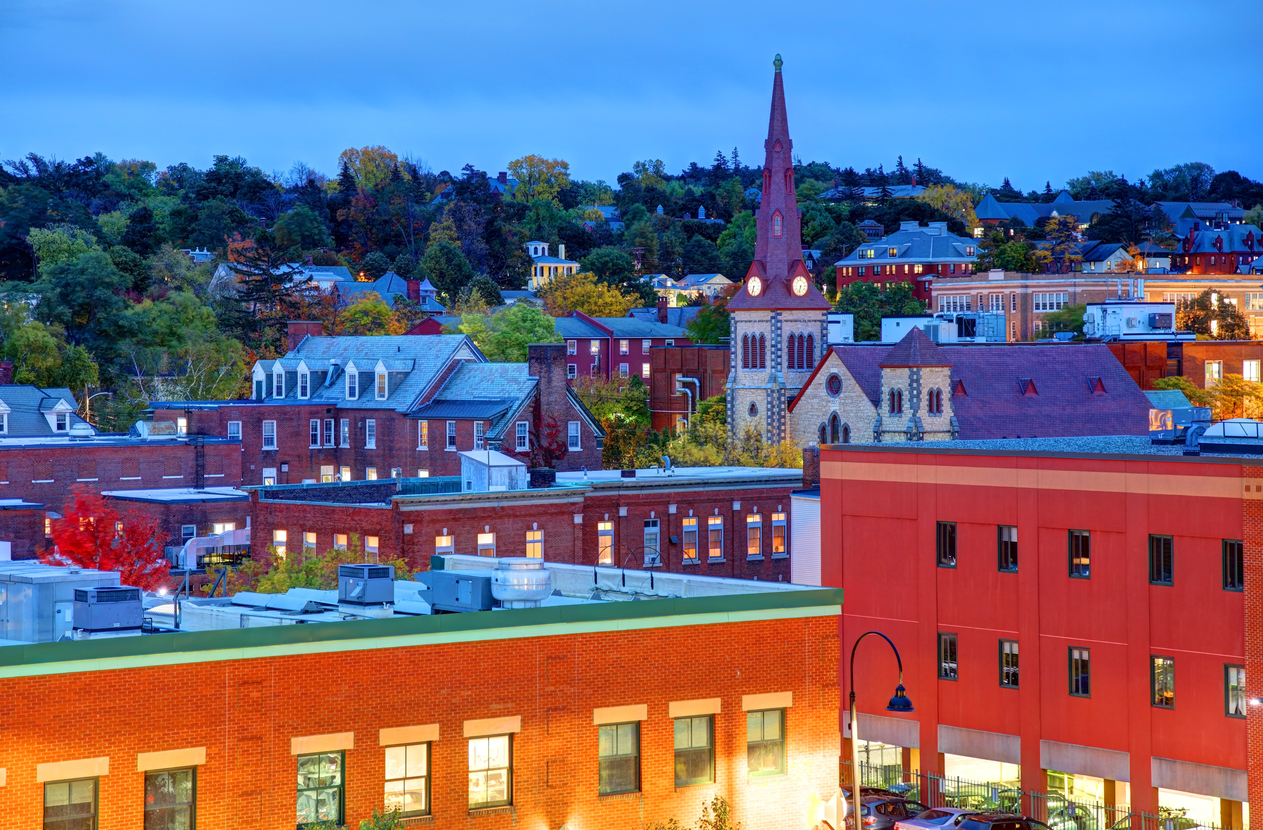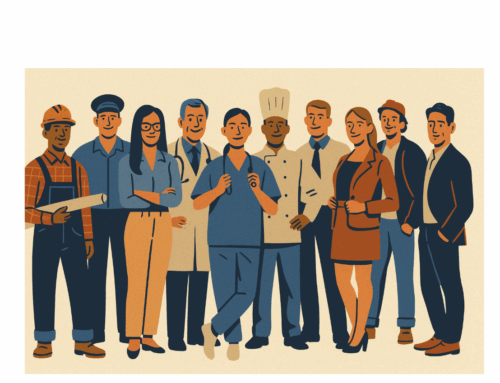By Emma Hecker
On June 30th, the Economic Innovation Group (EIG), in partnership with Upwork, hosted our second virtual session in the “Rise of Remote Series,” a three-part series of virtual events exploring the long-term impacts of remote work for the U.S. economy, workers, and communities. View a recording of the event and key takeaways below for more information.
The Covid-19 pandemic accelerated trends in workers moving from densely populated, expensive urban areas to more affordable regions of the country. Spurred by pandemic-induced remote work requirements, thousands of workers chose to leave their Bay Area or New York City apartments for more space—and a lower cost of living—in America’s smaller cities and towns. And many chose America’s heartland as their new home. A whole host of smaller cities, like Burlington, Tulsa, and Greenville, experienced a significant population increase during the pandemic. Some places even offered additional incentives (Tulsa went so far as to offer some residents money to move there through its Tulsa Remote program) to encourage newly remote workers to relocate there.
The second session in EIG’s Rise of Remote Series focused on how we can leverage these migration and remote work trends to revitalize America’s heartland. It also featured a debate on how policymakers can further incentivize workers to relocate to smaller cities and use policy to expand broadband access and connectivity to all corners of the country. The webinar kicked off with a fireside chat between U.S. Senator Susan Collins (R-ME) and DJ Nordquist (EIG Executive Vice President) on the importance of bridging the digital divide, followed by a panel discussion between Michael McGeary (Head of Global Public Policy at Upwork), Kathryn de Wit (Broadband Access Initiative Project Director at The Pew Charitable Trusts), Laurel Farrer (CEO at Distribute Consulting), and Ben Stewart (Executive Director at Tulsa Remote) on the importance of broadband expansion and “social infrastructure,” or the ability for new residents to build community and make an impact where they live.
Watch a recording of the event and EIG’s key takeaways below for more information.
Key Takeaways
What workers want when relocating
- Ben Stewart explained how “incenting community” is critical for attracting new remote workers. “We know that when people come and build community, then they stay,” he said.
- Lower housing costs, ease of living, and access to nature and open spaces are huge, added Stewart. “Moving from a studio apartment in a major city, where you are maybe spending 2 to 3 thousand dollars in rent, to being able to buy a three- or four-bedroom home…has been a tremendous driver for many people.”
- Good infrastructure, affordable housing, outdoor recreation opportunities, and community opportunities are key for cities to attract remote workers, said Laurel Farrer. “They’re hungry to be a part of something on a smaller level where they can have more impact,” she added.
- Michael McGeary asked, “What can we do to increase opportunity in rural areas?” He added, “you need a support system, you need a community around you, and you just need to be able to get online.”
The need case for universal broadband access
- Senator Collins emphasized how telling it is that we now have “bicameral, bipartisan agreement that we simply cannot have unserved areas in our country.” The senator added: “I believe that is one of the most important lessons of the pandemic.”
- DJ Nordquist highlighted that an estimated 35 percent of rural households lack access to reliable broadband at minimally acceptable speeds.
- Unequal access to broadband “creates economic and social disparities and inequities,” emphasized Senator Collins.
- In addition to the social factors that cities need to attract remote workers, McGeary emphasized the importance of “just being able to get online.” He went further, explaining that “we need to have more of that type of vision across the board—in second- and third-tier cities, in rural areas and exurban areas and where people are going so that there is more of an opportunity to find a foothold.”
How to improve connectivity across the country
- On successful broadband expansion efforts: “The commonality is really in the level of community engagement,” said Kathryn de Wit. “We found that the most effective state programs, and this going down to the local level, are those that have a dedicated broadband office with dedicated staff and funding.”
- Senator Collins and Nordquist discussed the American Broadband Buildout Act, which Sen. Collins introduced this spring with Sen. Jacky Rosen (D-NV). The bill aims to ensure “rural Americans have access to broadband services at speeds they need to fully participate in the modern society and economy.”
- “We have to remind ourselves that we’re playing from behind,” said McGeary. He added that we need a federal framework to address some of the key pillars of broadband expansion, “then we need to look at the shovel-ready programs that are in place, fund those and expand upon them.”
On the complexity of the digital divide
- de Wit emphasized that we are at the hardest part of solving the digital divide. “It’s really important for folks to understand that…we are at a place where a high level of precision is needed to understand where the gaps exist and what the appropriate solutions are to solve them.”
- de Wit also explained that universal broadband expansion isn’t going to happen overnight. “Broadband is infrastructure. That means it takes time and money to build,” she finished.
- When it comes to broadband expansion, “not every dollar is going to be spent perfectly,” highlighted McGeary. “Let’s find every program we can to get more people access to broadband and high speed technology…[and] not let the perfect be the enemy of the good,” he concluded.
- Stewart highlighted the challenges of broadband expansion in Tulsa. “Seeing where urban meets rural—as Tulsa maybe appears to many—we still have 15 percent of our citizens who don’t have access to work remotely or learn digitally.”
How we can leverage remote work to counter population decline in many rural parts of the country
- Senator Collins explained that “this is a chance for rural states to reverse the loss of population, attract entrepreneurs who would like to live in and enjoy the beauty of our states, and for larger companies to place their workforces across the country.”
- “Sometimes a small [city] size can be an advantage,” said Farrer. “People are looking for that more rural, impactful experience.”
- It’s not a coincidence that the “hottest real estate market in the country right now is Boise, Idaho,” emphasized Senator Collins.
How remote work is changing traditional urban vs. rural dynamics
- Farrer explained that communication and education are key. “When we started giving more education and resources to current employers about ‘how can you offer remote work and workplace flexibility in these tiny little towns of 200 people,’ that’s when we saw the magic happen.”
- Stewart emphasized that remote work “is a game-changer for cities and regions across the country to gain diverse, talented workforce members.”
- Senator Collins explained that often people want to live near nature and open spaces, like exist in Maine, and thanks to telework “now, they can live there and work there.”
- “This is really revolutionalizing economic development as we know it,” said Farrer.






